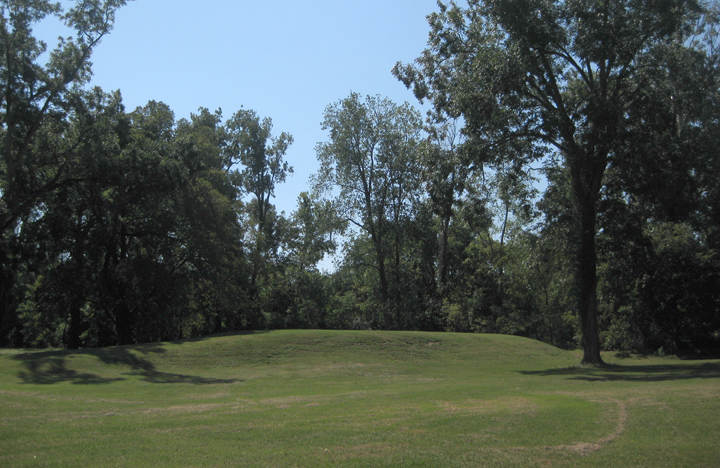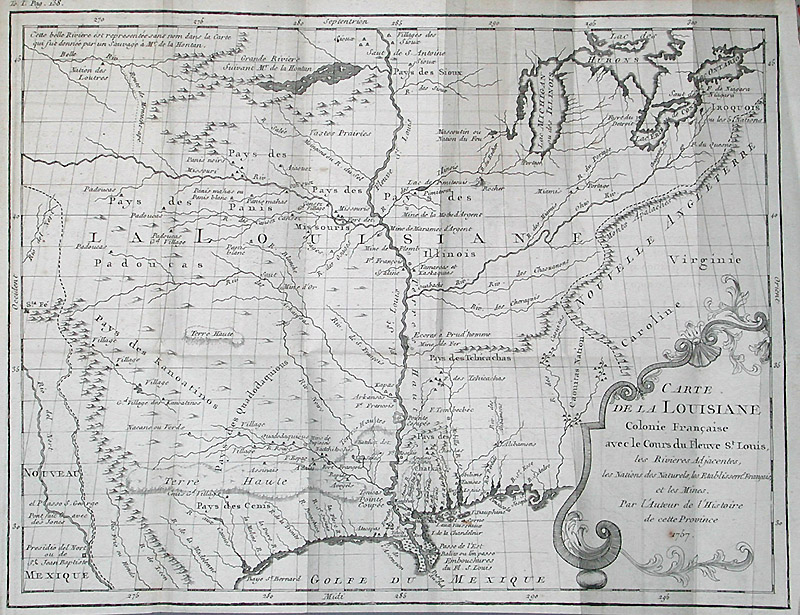|
Tattooed Serpent
Tattooed Serpent (died 1725) (Natchez: Obalalkabiche; French: Serpent Piqué) was the war chief of the Natchez people of Grand Village, which was located near Natchez in what is now the U.S. state of Mississippi. He and his brother, the paramount chief Great Sun, allied his people with the French colonists. He was a friend of the colonist and chronicler Antoine-Simon Le Page du Pratz. Le Page du Pratz described their friendship and Tattooed Serpent's death and funeral in detail in his chronicle. Source of the name The name ''Obalalkabiche'' (Tattooed Serpent) was traditionally adopted by the War Chief of the Natchez, who was always the younger brother of the Paramount Chief, whose official name was ''Yak-stalchil'' (Great Sun). Thus, the Tattooed Serpent who died in 1725 and was a friend of Le Page du Pratz was preceded by his own maternal uncle (died 1700), who was also called Tattooed Serpent while in office. On his death in 1725, Tattooed Serpent was succeeded by his sister's ... [...More Info...] [...Related Items...] OR: [Wikipedia] [Google] [Baidu] |
Temple Mound Grand Village Natchez
A temple (from the Latin ) is a building reserved for spiritual rituals and activities such as prayer and sacrifice. Religions which erect temples include Christianity (whose temples are typically called churches), Hinduism (whose temples are called Mandir), Buddhism, Sikhism (whose temples are called gurudwara), Jainism (whose temples are sometimes called derasar), Islam (whose temples are called mosques), Judaism (whose temples are called synagogues), Zoroastrianism (whose temples are sometimes called Agiary), the Baha'i Faith (which are often simply referred to as Baha'i House of Worship), Taoism (which are sometimes called Daoguan), Shinto (which are sometimes called Jinja), Confucianism (which are sometimes called the Temple of Confucius), and ancient religions such as the Ancient Egyptian religion and the Ancient Greek religion. The form and function of temples are thus very variable, though they are often considered by believers to be, in some sense, the "house" of ... [...More Info...] [...Related Items...] OR: [Wikipedia] [Google] [Baidu] |
Natchez Language
The Natchez language is the ancestral language of the Natchez people who historically inhabited Mississippi and Louisiana, and who now mostly live among the Muscogee and Cherokee peoples in Oklahoma. The language is considered to be either unrelated to other indigenous languages of the Americas or distantly related to the Muskogean languages. The phonology of Natchez is atypical in having voicing distinction in its sonorants but not in its obstruents; it also has a wide range of morphophonemic processes. Morphologically, it has complex verbal inflection and a relatively simple nominal inflection (the ergative case marks nouns in transitive clauses), and its syntax is characterized by active-stative alignment and subject-object-verb word order (or more accurately Agent-Object-Verb and Subject-Verb). Natchez storytellers used a specific register, "cannibal speech" to impersonate cannibals, a recurring character in Natchez oral literature. The Natchez chiefdom was destroyed in the ... [...More Info...] [...Related Items...] OR: [Wikipedia] [Google] [Baidu] |
French Language
French ( or ) is a Romance language of the Indo-European family. It descended from the Vulgar Latin of the Roman Empire, as did all Romance languages. French evolved from Gallo-Romance, the Latin spoken in Gaul, and more specifically in Northern Gaul. Its closest relatives are the other langues d'oïl—languages historically spoken in northern France and in southern Belgium, which French ( Francien) largely supplanted. French was also influenced by native Celtic languages of Northern Roman Gaul like Gallia Belgica and by the ( Germanic) Frankish language of the post-Roman Frankish invaders. Today, owing to France's past overseas expansion, there are numerous French-based creole languages, most notably Haitian Creole. A French-speaking person or nation may be referred to as Francophone in both English and French. French is an official language in 29 countries across multiple continents, most of which are members of the ''Organisation internationale de la Francophonie'' ... [...More Info...] [...Related Items...] OR: [Wikipedia] [Google] [Baidu] |
Natchez People
The Natchez (; Natchez pronunciation ) are a Native American people who originally lived in the Natchez Bluffs area in the Lower Mississippi Valley, near the present-day city of Natchez, Mississippi in the United States. They spoke a language with no known close relatives, although it may be very distantly related to the Muskogean languages of the Creek Confederacy.Geoffrey Kimball, "Natchez" in ''Native Languages of the Southeastern United States'', ed. Janine Scancarelli and Heath ... [...More Info...] [...Related Items...] OR: [Wikipedia] [Google] [Baidu] |
Grand Village Of The Natchez
Grand Village of the Natchez, ( 22 AD 501) also known as the Fatherland Site, is a site encompassing a prehistoric indigenous village and earthwork mounds in present-day south Natchez, Mississippi. The village complex was constructed starting about 1200 CE by members of the prehistoric Plaquemine culture. They built the three platform mounds in stages. Another phase of significant construction work by these prehistoric people has been dated to the mid-15th century. It was named for the historic Natchez people, who used the site in the 17th and 18th centuries. and In the early 18th century, when the historic Natchez people occupied the site, they added to the mounds. The village was the Natchez tribe's main political and religious ceremonial center in the late 17th and early 18th centuries, according to historical and archaeological evidence. It replaced the Emerald Mound site in this role. After suffering a 1730 military defeat by French settlers, the Natchez abandon ... [...More Info...] [...Related Items...] OR: [Wikipedia] [Google] [Baidu] |
Natchez, Mississippi
Natchez ( ) is the county seat of and only city in Adams County, Mississippi, United States. Natchez has a total population of 14,520 (as of the 2020 census). Located on the Mississippi River across from Vidalia in Concordia Parish, Louisiana, Natchez was a prominent city in the antebellum years, a center of cotton planters and Mississippi River trade. Natchez is some southwest of Jackson, the capital of Mississippi, which is located near the center of the state. It is approximately north of Baton Rouge, Louisiana, located on the lower Mississippi River. Natchez is the 25th-largest city in the state. The city was named for the Natchez tribe of Native Americans, who with their ancestors, inhabited much of the area from the 8th century AD through the French colonial period. History Established by French colonists in 1716, Natchez is one of the oldest and most important European settlements in the lower Mississippi River Valley. After the French lost the French and India ... [...More Info...] [...Related Items...] OR: [Wikipedia] [Google] [Baidu] |
Antoine-Simon Le Page Du Pratz
Antoine-Simon Le Page du Pratz (1695?–1775)John C. Van Horne, "Memoir of a French Visitor: du Pratz, History of Louisiana" Discovering Lewis & Clark was a French , historian, and naturalist who is best known for his ''Histoire de la Louisiane''. It was first published in twelve installments from 1751 to 1753 in the ''Journal Economique'', then completely in three volumes in Paris in 1758. After their victory in the |
Natchez Revolt
The Natchez revolt, or the Natchez massacre, was an attack by the Natchez Native American people on French colonists near present-day Natchez, Mississippi, on November 29, 1729. The Natchez and French had lived alongside each other in the Louisiana colony for more than a decade prior to the incident, mostly conducting peaceful trade and occasionally intermarrying. After a period of deteriorating relations and warring, Natchez leaders were provoked to revolt when the French colonial commandant, Sieur de Chépart, demanded land from a Natchez village for his own plantation near Fort Rosalie. The Natchez plotted their attack over several days and managed to conceal their plans from most of the French; colonists who overheard and warned Chépart of an attack were considered untruthful and were punished. In a coordinated attack on the fort and the homesteads, the Natchez killed almost all of the Frenchmen, while sparing most of the women and enslaved Africans. Approximately 230 ... [...More Info...] [...Related Items...] OR: [Wikipedia] [Google] [Baidu] |
White Apple Village
The Mazique Archeological Site ( 22 AD 502), also known as White Apple Village, is a prehistoric Coles Creek culture archaeological site located in Adams County, Mississippi. It is also the location of the historic period White Apple Village of the Natchez people and the Mazique Plantation. It was added to the NRHP on October 23, 1991, as NRIS number 91001529. Description The site is located on the west bank of Second Creek, a tributary of the Homochitto River and consisted of three platform mounds and a central plaza. It was occupied during both the Coles Creek period (700–1000 CE) and the later Plaquemine Mississippian period (1000–1680 CE), when it was recorded in historic times as the White Apple village of the Natchez. Mound A sits directly on the bank of Second Creek and more than half of its mass has been lost due to the creek eroding into it. It is currently in height but was recorded as being in height and in circumference by Montroville W. Dickeson in 1841 a ... [...More Info...] [...Related Items...] OR: [Wikipedia] [Google] [Baidu] |
Dumont De Montigny
Jean-François-Benjamin Dumont de Montigny (31 July 1696 – 1760), or Dumont de Montigny, was a French colonial officer and farmer in French Louisiana in the 18th century. He was born in Paris, France, on July 31, 1696, and died in 1760 in Pondicherry, India. His writings about French Louisiana include a two-volume history published in 1753, as well as an epic poem and a prose memoir preserved in manuscript and published long after his death.Sayre, Gordon"Le Page du Pratz and Dumont de Montigny: Historians of French Louisiana, 1718-1758."University of Oregon. Retrieved August 13, 2010. ''This article incorporates text from this source, which is licensed CC-BY-SA-3.0.'' Early life Dumont was the youngest of six sons of Jacques François Dumont, an ''avocat au parlement de Paris,'' that is, a prominent magistrate. In surviving documents, he often signed his name as François-Benjamin Dumont, but history works and library catalogs have preserved the "Jean." The name "de M ... [...More Info...] [...Related Items...] OR: [Wikipedia] [Google] [Baidu] |
Funeral Procession Of Serpent Pique Du Pratz
A funeral is a ceremony connected with the final disposition of a corpse, such as a burial or cremation, with the attendant observances. Funerary customs comprise the complex of beliefs and practices used by a culture to remember and respect the dead, from interment, to various monuments, prayers, and rituals undertaken in their honor. Customs vary between cultures and religious groups. Funerals have both normative and legal components. Common secular motivations for funerals include mourning the deceased, celebrating their life, and offering support and sympathy to the bereaved; additionally, funerals may have religious aspects that are intended to help the soul of the deceased reach the afterlife, resurrection or reincarnation. The funeral usually includes a ritual through which the corpse receives a final disposition. Depending on culture and religion, these can involve either the destruction of the body (for example, by cremation or sky burial) or its preservation (for examp ... [...More Info...] [...Related Items...] OR: [Wikipedia] [Google] [Baidu] |
Human Sacrifice
Human sacrifice is the act of killing one or more humans as part of a ritual, which is usually intended to please or appease gods, a human ruler, an authoritative/priestly figure or spirits of dead ancestors or as a retainer sacrifice, wherein a monarch's servants are killed in order for them to continue to serve their master in the next life. Closely related practices found in some tribal societies are cannibalism and headhunting. Human sacrifice was practiced in many human societies beginning in prehistoric times. By the Iron Age with the associated developments in religion (the Axial Age), human sacrifice was becoming less common throughout Africa, Europe, and Asia, and came to be looked down upon as barbaric during classical antiquity. In the Americas, however, human sacrifice continued to be practiced, by some, to varying degrees until the European colonization of the Americas. Today, human sacrifice has become extremely rare. Modern secular laws treat human sacrifices ... [...More Info...] [...Related Items...] OR: [Wikipedia] [Google] [Baidu] |








_-_Ciudad_de_México.jpg)